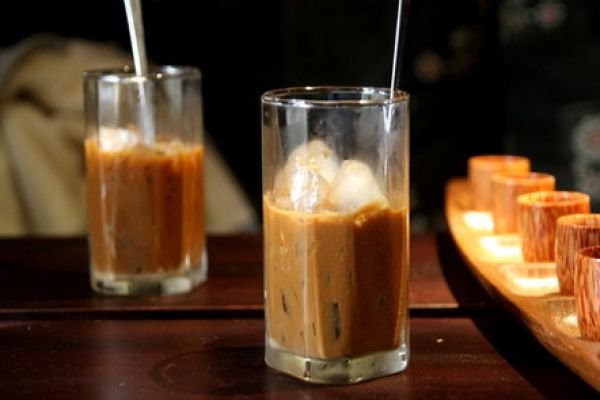
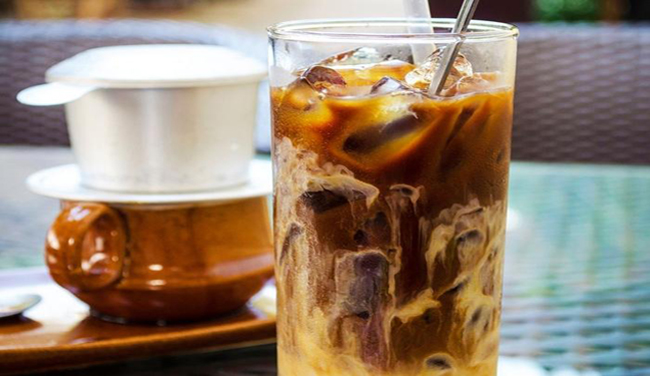
Tran Khanh Nghi, 24, stood on a balcony overlooking a wide valley in Ho Chi Minh City’s District 3.
The afternoon rain had begun to fall as she finished the last of her ca phe sua da, a drink she missed dearly during ten frigid months spent studying actuarial science in Michigan.
Asian markets there sold the tin filter, ground Vietnamese Robusta and the sweetened condensed milk required to make the drink that’s been synonymous with Saigon for over a century.
“But in America, you don’t have time for Vietnamese coffee,” she said, adding that her fellow overseas students asked Starbucks baristas to lose their espresso with chocolate syrup and fresh milk as a kind of instant substitute.
Nghi says she’s happy to be back in Saigon’s humid embrace, spending long afternoons sipping the sweet heavy brew that's remained a constant through a century of military and economic upheaval.
In her book Appetites and Aspirations in Vietnam, food historian Erica Peters described how colonialism basically created ca phe sua -- a drink initially spurned by revolutionary poets who preferred tea.
“Before colonialism, few Vietnamese had tried coffee. During the period of French rule, coffee plantations stretched from Can Tho through the Da Lat region and north to Ninh Binh and beyond. Near those plantations, Vietnamese villagers drank an infusion of coffee leaves like the local tea. In the colonial cities, however, a new style of coffee drinking found favour: brewed strong, with sweetened condensed milk, and iced in the tropical south -- ca phe sua da.”
Peters further described how French importers of condensed milk began an aggressive and (racist) marketing campaign designed to throw shade on Saigon’s many Tamil milkmen. The ads mostly played up the (non-existent) health benefits of the imported condensed milk and cast aspersions on the quality of domestic dairy operations.
It worked.
Peters cited a letter from 1888 that claimed Vietnamese women sold coffee from every street corner in Saigon.
“Cans of milk also became prestige items and made appearances alongside incense and betel nuts on domestic altars honouring a family’s ancestors,” she wrote.
The Robusta boom
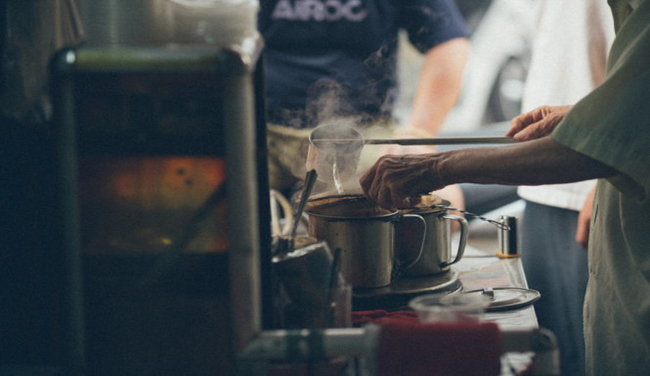
Roughly a century later, Vietnam engaged in an ambitious plan to go from one of the poorest agrarian economies to the largest exporter of Robusta -- the cheap caffeine-rich family of coffee that few can drink straight up.
For decades, newspapers have carried vague exposes describing men cutting naturally diesel-flavored beans with everything from butter to burnt corn or simply “chemicals”.
Sweetened condensed milk provided the perfect mask for those flavours.
When Starbucks came to town in 2013, Dang Le Nguyen Vu the millionaire chairman of the Trung Nguyen coffee company declared war. No one had made more money selling bags of pre-ground coffee to Vietnamese consumer than Chairman Vu.
“No worries,” he told Bloomberg, before vowing to out-sell Starbucks on the streets of Seattle. Vu even went so far as to disparage Starbucks as a pusher of “coffee-flavored water with sugar in it” -- an odd barb coming from the pusher of the developing world’s favorite instant coffee brand.
Instead of ushering forth a final conflagration between the frappuccino and the ca phe sua da, Starbucks’ arrival coincided with an explosion of independent coffee shops, creating a starkly different landscape from the days when Vietnam consumed far less coffee than any other major growing country.
In 2007, Vietnam brewed under a million bags of coffee annually -- about half as much as Mexico and a third as much as Ethiopia.
In June, the U.S. Department of Agriculture (the most reliable source for current industry figures) scaled up its estimate to 2.5 million bags in the coming market year “due to the continued expansion of coffee shops and cafes”.
Many of those new cafes have, for the first time, brought Vietnamese beans forward -- serving products that taste good in their own right. Perhaps the largest and most successful cafe in Ho Chi Minh City, the Workshop, roasts and sells Arabica grown in Da Lat alongside imports from Africa and Central America. The low-yield, high-value family of beans grow in cool mountain areas and represent a tiny percentage of what Vietnam sends abroad, every year.
For years, the ca phe sua da has relied on Robusta alone -- one reason why the Workshop has never sold one.
“We never will,” said Dung Nguyen, Workshop’s roaster and resident coffee expert. “You can get that drink literally anywhere. So why not have a place that does something different?”
When Workshop opened, Dung estimates the whole city consumed under a tonne of local Arabica per year. Now he guesses that a half dozen speciality cafes within spitting distance of his shop probably sell a total of five tonnes per year. Photographer Nguyen Thanh Truc opened [the] Cafe in his family's home five years ago and began tinkering with a roster and small batches of Arabica and Robusta sent down from Da Lat. He guesses he now roasts beans for ten different coffee shops in a small courtyard where he likes to smoke and play the guitar.
“Some people want to drink the same coffee every day,” he said. “Others come and ask and they want to taste, they want to experiment.”
Truc says 60-70 percent of his customers drink tin filter Robusta dosed with sugar or condensed milk; they aren’t interested in a small batch of Arabica -- a situation he described as “unfortunate”.
He looks forward to customers who come in looking to try the best things the country has to offer.
Make your own decision
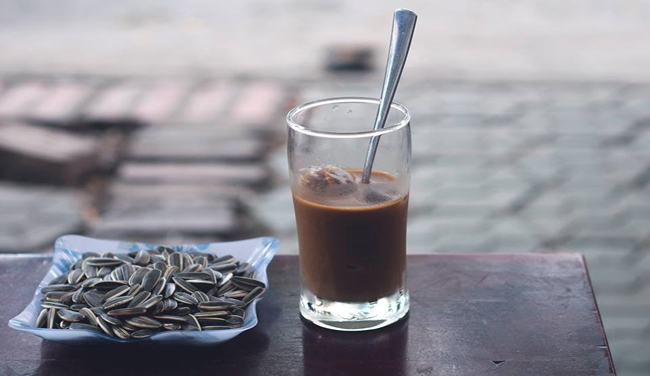
Far on the fringe of this new project sits Nguyen Canh Hung.
The 40-year old engineer first developed his taste for fine coffee while working at a company that supplied water treatment equipment for industrial brewers.
“In the beginning, I didn't like filter coffee,” he said. “I liked things that were strong, heavy.”
During business trips to Amsterdam and Berlin, Hung slipped into cafes that served straight coffee that reminded him, in their complexity, of wine. He signed up for bean roasting workshops in Japan and learned his way around a cappuccino machine in Denmark.
Last year, Hung built a futuristic coffee lab into a villa across the street from the pool at the Saigon Pearl, one of the first high-end apartment complexes developed north of the city centre.
He called it Bosgaurus -- the nearly unpronounceable Latin name for Vietnam’s endangered Guar bison -- and outfitted the basement with a temperature and humidity-controlled storage space for beans from all over the world.
He left the upper floor mostly free to serve as a kind of competition space for visiting baristas, but filled the white, glassy ground floor with Scandinavian furniture and a floating stainless steel bar loaded with the latest brewing equipment. He also personally installed two shiny top-end roasting machines capable of producing custom roasts at a rate of six kilos per hour.
After a year in business, they average about three kilos per day.
“People don’t really like the monochrome aspect of the place,” Hung signed on a recent weekday. “They don’t appreciate minimalist design.”
His staff of fifteen includes the winner of Vietnam’s first national barista competition. In September, over fifty contenders gathered in a heavy storm to brew a Rwandan roast in a giant filter-tipped syringe known as an Aeropress.
Hung’s staff won.
Does anyone care?
“No,” Hung said.
Free coffee Monday mornings failed to attract the downtown crowds and Hung now rents out half his upper floor as an office. His motto remains Keeping Hope Awake and he remains forever tinkering.
The Bosgaurus ca phe sua da consists of a smoky VND90,00 blend of Vietnamese and Ethiopian beans that drop into a familiar puddle of sweet, condensed milk.
Hung also machined a bulky phin out of stainless steel and bulked it out with rubber seals and a heavy metal plunger.
“You can sit and work and forget about it or you can press it down,” he said. “You make your own decision.”
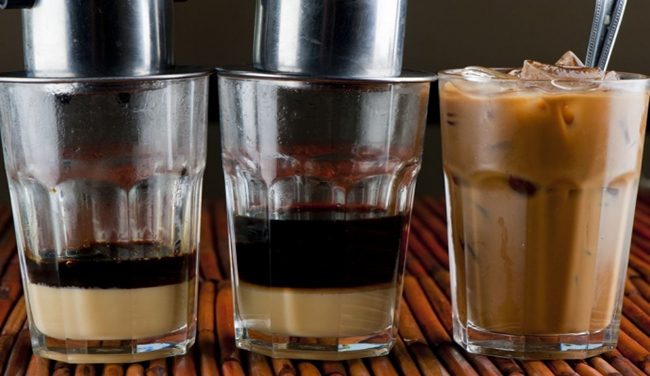
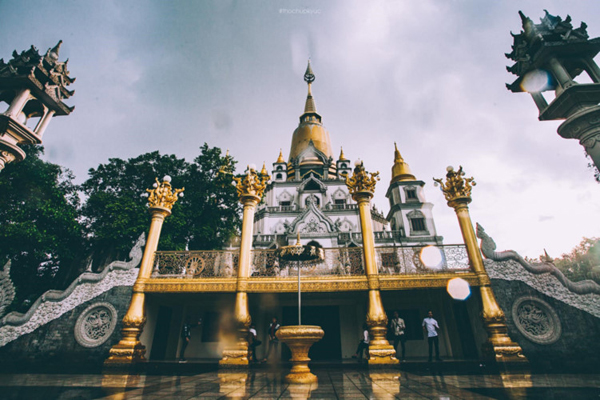





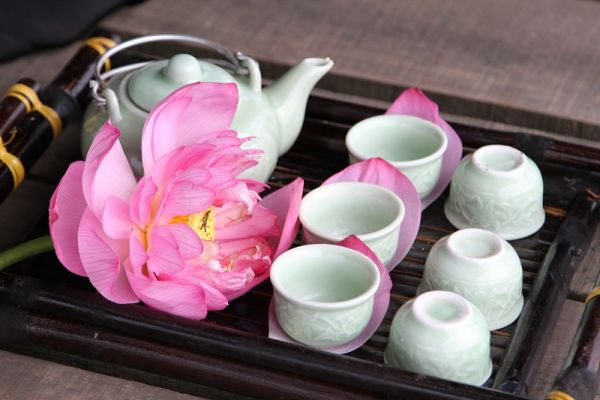
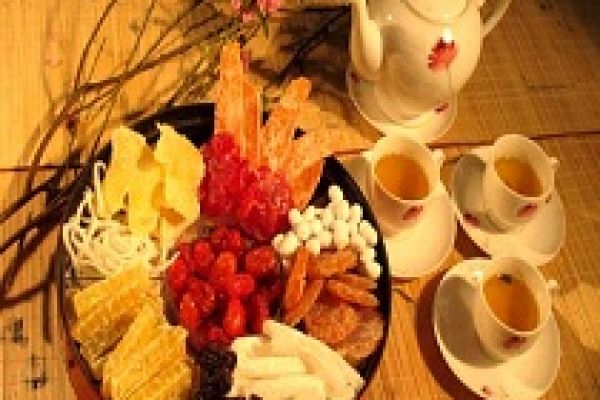
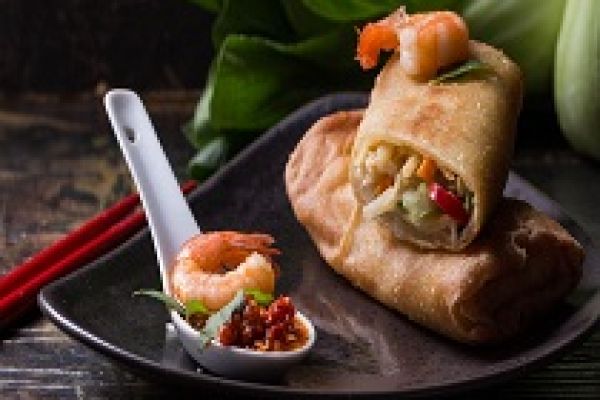
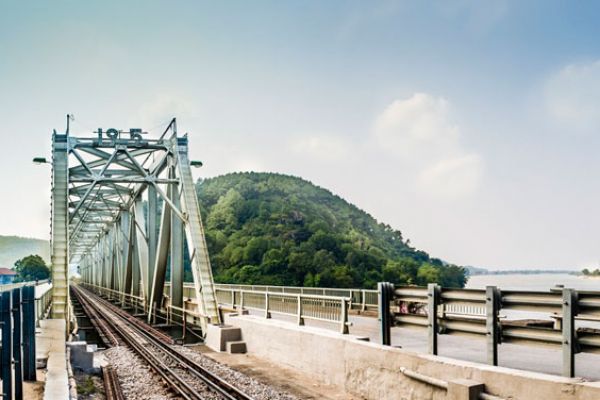
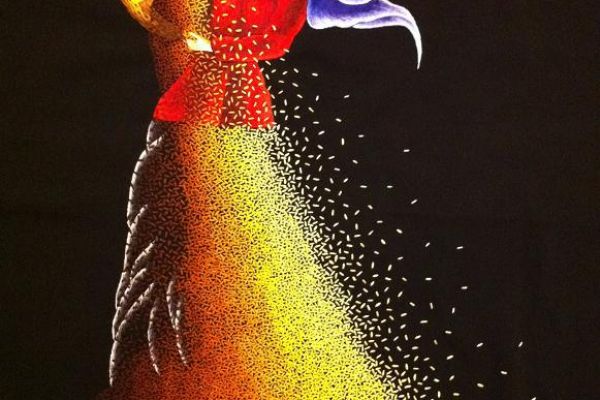
(84-63) 3 826042 – (84-63) 3 511142
No 54 Nguyen Dinh Chieu, Ham Tien Central Mui Ne Beach Binh Thuan Vietnam
523 To Hien Thanh District 10 Ho Chi Minh City Vietnam
Ha Long Halong City Quang Ninh Vietnam
A13 Hung Thong 2 Halong City Quang Ninh Vietnam




